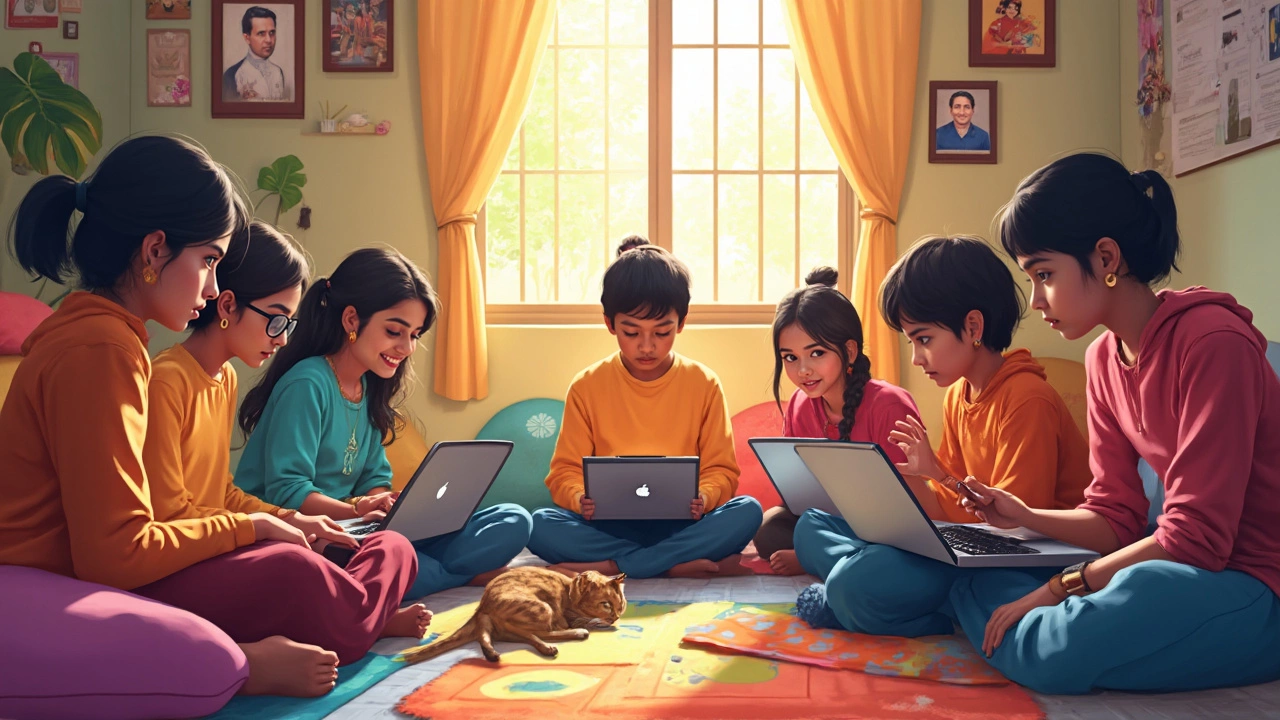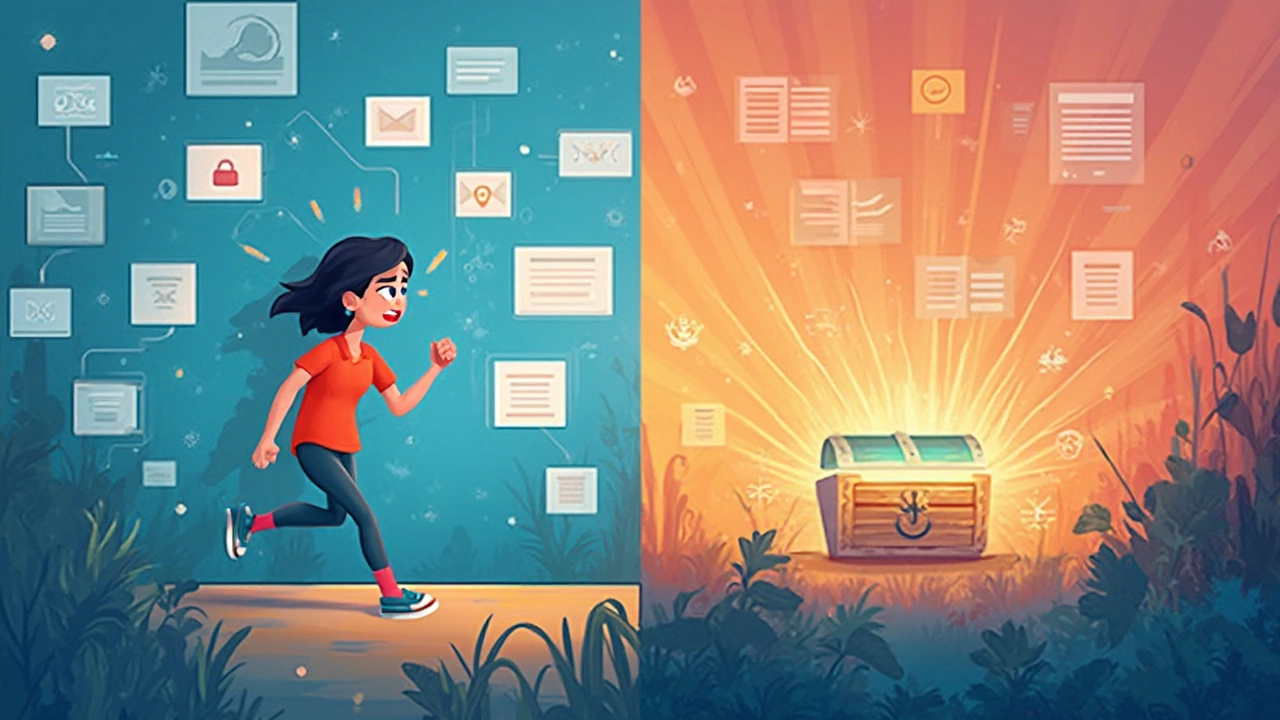
Paying big money for skill courses just doesn’t make sense anymore. My teenager, Kabir, taught himself Photoshop on YouTube last year—didn’t spend a single rupee. With free sites everywhere, the real challenge isn’t “Can I learn for free?” but “Where should I learn?”
If you’re after a career upgrade, a new hobby, or just nosing around to cure boredom, online learning has something for you. The catch? Not every free course or platform is worth your time. Some sites are packed with ads and clickbait. Others have solid lessons but lousy instructions, leaving you confused halfway through. And then there are the hidden gems that quietly turn regular folks into coders, designers, or even chess players—all for nothing.
No gatekeeping here: I’ll walk you through the sites that actually help, the tricks for squeezing value from free resources, and how to stay sharp without feeling burned out. Whether you’re a busy parent like me or a sleep-deprived college student, you’ll find something that fits your schedule—and your wallet.
- Why Free Learning Matters Now
- Top Free Websites for Skill Training
- How to Maximize Free Online Resources
- Tips for Staying Motivated (and Avoiding Overload)
Why Free Learning Matters Now
If you’d asked my daughter Leela how people picked up new skills just a few years ago, she’d probably talk about cramming for school exams or dragging herself to a pricey coaching class. Now, everything’s flipped. Today, anyone with a phone and internet can access world-class lessons—for absolutely nothing.
Big numbers back it up. An epic report by Class Central last year showed that more than 220 million people signed up for online courses in 2024 alone. Platforms like Coursera and edX let you take courses from places like Harvard and Google, totally free if you skip the official certificate. YouTube, which started out as just a place for cat videos, now has millions of skill tutorials—coding, cooking, even fixing that noisy ceiling fan. There’s a lesson for just about everything.
What’s the real gamechanger? Flexibility. With free online courses, you decide when and where you want to learn. Squeezing in a 10-minute Python lesson after the kids sleep? Done. Rewatching a tricky math video before an exam? Easy. No one cares if you’re still in pajamas.
With job markets changing so fast, free learning is more than nice-to-have. Some companies like Google openly say they care more about skills than degrees, which means free learning isn’t just an option, it’s a huge opportunity. You can test out fields before you commit, stack up skills like Lego blocks for your resume, and keep up when tech moves faster than yesterday’s news.
And look, not everybody has the cash or time for traditional classes. Free learning levels the playing field—the only thing you really need is curiosity, an internet connection, and maybe a little bit of self-control to avoid TikTok for an hour.
Top Free Websites for Skill Training
If you want to boost your abilities without emptying your wallet, these sites will get you moving fast. Honestly, not all sites are built equal, so here's where each one shines—and what you should watch for.
- Coursera
Yep, most people know Coursera for pricey courses, but there’s a secret: tons of classes let you "audit" for free. You get world-class lectures and assignments, just without the paper certificate. Want a Yale or Google course? Just look for the audit option at checkout. - Khan Academy
This one's a classic, especially for students or anyone rusty with school stuff. Khan covers everything from math basics to coding and economics, explained clearly (my daughter Leela actually likes their science videos). There’s no cost, no ads, and it works well on mobile if you’re always on the move. - edX
Think of edX as Coursera's close cousin. Loads of university-taught classes are free if you skip the official certificate. You want classes from MIT, Harvard, or IIT Bombay? It's all in there. If you’re prepping for college, these lectures feel like the real thing—because they’re often the same ones those students see. - Codecademy
If coding, data, or digital skills are your goal, Codecademy’s free plan covers basics in Python, HTML, CSS, and more. The paid pro track is flashier, but you can still learn solid foundations without ever opening your wallet. - YouTube
I can’t skip this. These days, you can learn almost anything free (from baking to calculus) on YouTube, as long as you know whose channel to follow. Look for teachers with step-by-step playlists and lots of comments. Example: CS50 from Harvard is free and has millions of views for a reason. - FutureLearn
Here, UK universities post a bunch of free short courses, especially around health, business, and “soft skills” like CV writing. Courses stay open for several weeks, and you don’t have to be from the UK to join.
Here's a quick look at how these sites actually stack up on key points:
| Website | Main Focus | Free Access Type | Certificate Available |
|---|---|---|---|
| Coursera | Academic & Professional | Audit courses | Paid |
| Khan Academy | School subjects, Coding | Everything free | No |
| edX | Academic | Audit courses | Paid |
| Codecademy | Coding | Basic courses free | No |
| YouTube | Anything | All free | No |
| FutureLearn | Life & work skills | Short courses free | Paid |
If you’re completely new, free learning sites like these mean you can sample five different skills without risk. Try a couple and see whose teaching style actually clicks for you—don’t just look at the brand name. There’s no single “best”—it depends on what you want and how you learn best.

How to Maximize Free Online Resources
When you jump into free learning, it’s easy to get lost in the flood of videos, articles, and apps. Here’s how to actually get something out of the chaos.
You’ll learn more—and remember longer—if you don’t just binge random lessons. The key is to pick one goal at a time. Want to learn Python? Don’t grab courses on Java, cybersecurity, and app design in the same week. Pick Python, stick to it, and finish what you start. A 2023 survey by EdSurge showed that learners who complete structured online courses are 38% more likely to use the skill professionally than those who hop around different topics.
"Online resources are most powerful when you use them with a clear goal. Don’t just wander, learn with a purpose."
– Sal Khan, Founder of Khan Academy
Next step: make a micro-schedule. You don’t need to study three hours straight—unless you’re superhuman or have zero distractions at home (lucky you!). Even 20–30 minutes a day, five days a week, beats zero regularity. Try setting alarms or calendar reminders. My daughter Leela crushed a free drawing course on Skillshare by treating it like an actual class with a set time daily.
- Bookmark your progress: Most sites let you save your place in a course or create playlists. Use that!
- Take handwritten notes—not just screenshots. Writing helps your brain “lock in” new ideas.
- Mix it up. Watch a video, then do a quick quiz or project to use what you learned. Practice > memorizing.
- Ignore fancy certificates if you just want the skill. Focus on the “doing,” not just the “watching.”
Here’s a quick look at how much time it really takes to learn a new skill on popular free platforms:
| Platform | Average Course Length | Languages Offered |
|---|---|---|
| Coursera (free courses) | 12–24 hours | 8+ |
| Khan Academy | 5–15 hours (modular) | English, Hindi, Spanish |
| Codecademy (basic) | 8–20 hours | Python, Java, others |
| Harvard edX | 10–40 hours | English |
Last tip: Find a community. Even if you’re learning solo, platforms like Reddit’s r/learnprogramming or Discord study groups help you stay accountable. A Stanford study found students who joined online communities completed 22% more lessons than those who didn’t.
Tips for Staying Motivated (and Avoiding Overload)
Keeping your energy up with free online learning isn’t as easy as it sounds. You start a course, get excited, and then life gets in the way—or worse, you open yet another tab and suddenly you’re lost in an ocean of videos and PDFs. What’s the best way to avoid burnout and actually finish what you start?
First off, pick free learning goals that make sense for your life right now. Instead of piling on five different courses because they look cool, ask: “What’s my real reason for learning this?” Maybe you want to boost your work skills or just finally learn how to play your favorite song on guitar. One clear goal beats a messy to-do list.
- Break big goals into chunks. Don’t try to eat the whole cake in one sitting. Finish one lesson or module, then reward yourself—yes, that snack counts.
- Set a regular learning time. Even 20 minutes after dinner works. Put it in your calendar like you would a dentist appointment. Consistency beats marathon study sessions.
- Block distractions. Pop-ups, social media, your five-year-old wanting snacks every five minutes (I know that struggle)—try using a browser extension like StayFocusd or turn off notifications when you’re learning.
- Track progress—even if it’s tiny. Cross off lessons, jot notes on what you’ve learned, or tell a friend about your latest project. Apps like Notion or plain paper both do the trick.
- Switch up styles if you get bored. If a course feels dry, look for a podcast, quiz, or hands-on project about the same topic. The brain loves surprises.
Don’t forget breaks. There’s a study from Japan that shows short, regular breaks while learning help people remember more long-term. It’s not about grinding for hours; it’s about steady progress. If you start dreading your next lesson, take a day off—really. It's better to pause than burn out altogether.
Last tip from someone who’s tried and failed to learn Spanish twice: celebrate the small wins. Got through a hard lesson? Pat yourself on the back. Teaching your kids (hello, Leela!) what you just learned actually helps you remember it, too.
